Ocre en Provence
I thought I had a pretty good feel for Provence (thanks in part to Peter Mayle). I did not expect to stumble upon, literally, ocher.
Northeast of Apt there’s this funny little area known as Colorado Provençal, just outside the village of Rustrel. Stephanie says she’s wanted to go for a while, but I don’t remember hearing about it until we flipped through a brochure in Loriol showing orange rocks jutting out of the green Provençal garrigue. A few weeks later, heading south from Auvergne, we sought out a campground in Rustrel to explore this Colorado-en-France.
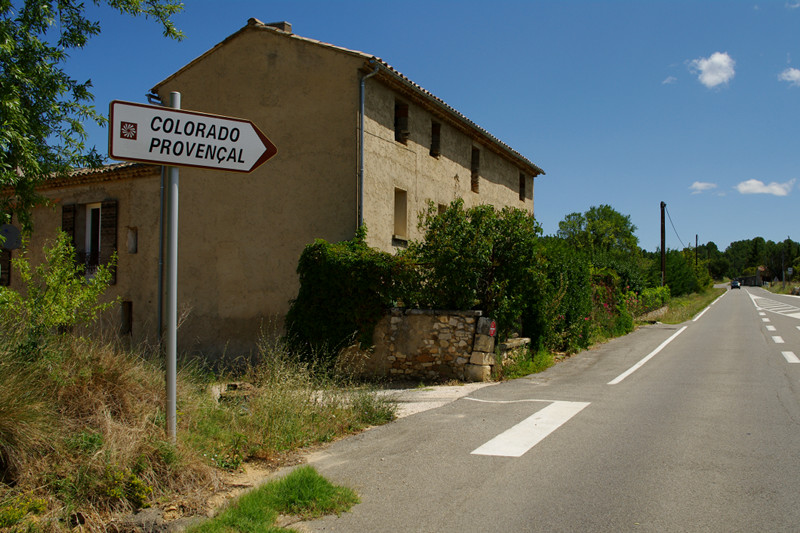
It wasn’t until we went hiking through the red, orange, yellow, and white rock of Colorado Provençal that we began to realize this place was more than just a pretty and unusual landscape: it was once a carrière d’ocre (ocher quarry). Thanks to an old map at the campground, we discovered it wasn’t the only one—a handful were scattered throughout the region. Another poster showcased several ocher-related sites in nearby Roussillon: a conservatory, a self-guided quarry trail, and an underground mine.
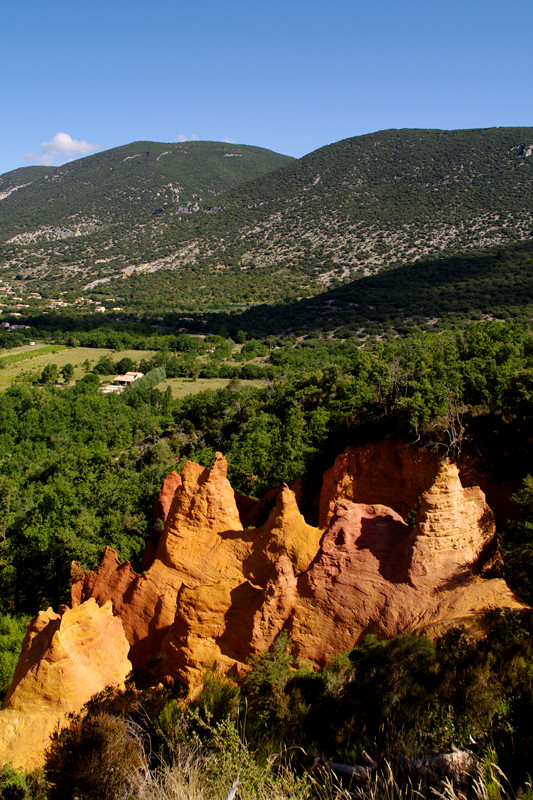
I had heard the word “ocher” before, but I couldn’t tell you how to spell it (ocre, ochre, ocher?) let alone what it meant. I had the sense that it referred to an obscure color, but I didn’t know which: brown, yellow, orange? It was clear though that ocher was more than just a fancy name for autumnal fashions, it was something that existed in nature.
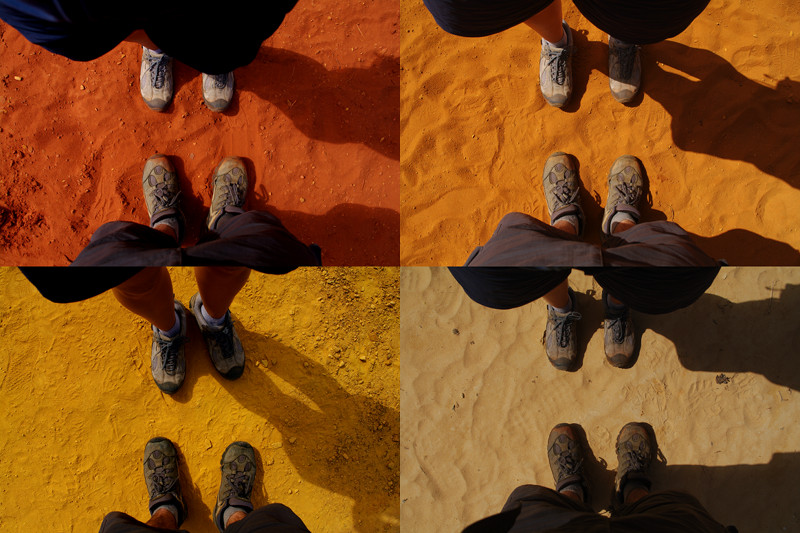
My curiosity was piqued. I wasn’t interested in the wine, the olive oil, or the fields of lavender that so many people come to Provence for. I wanted to know everything I could about ocher. Understanding it seemed to be a key to understanding something quintessentially Provençal: its color.
For anyone who’s been to Provence, or seen pictures of Provence, or wanted to emulate the style of Provence, the color palette is one of the first things you notice. The facades of houses are painted golden and pale yellows, brick reds, pinks, dark oranges, peaches, and light browns. Shutters predominantly come in shades of lavender blue and green. It’s a really striking combination, paired with the ubiquitous clay tile roofs, all set against the rough, dark green vegetation.
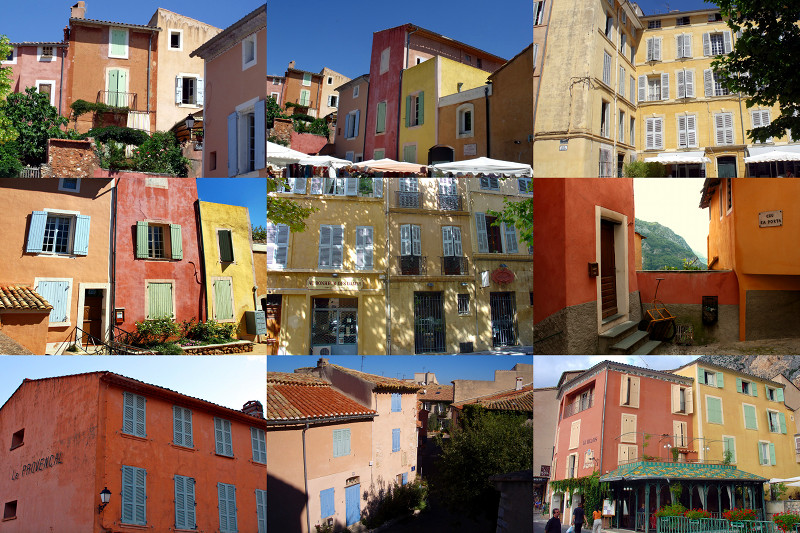
I felt like I had stumbled upon an answer to a question I didn’t know I had: why do the houses in Provence look the way they do? And why does new construction still draw on this color palette (besides building codes)? Could it actually be that the “look” of Provence comes from the dirt of Provence, and not just fashion? I knew the answer had to be ocher, but I didn’t yet fully appreciate how it came to be.
After two nights camping in Rustrel, we decided to relocate to a campground outside Roussillon as a base to further satisfy my ocher obsession. Roussillon is the Detroit of the one-time Provençal ocher industry. The village itself is perched on ocher cliffs that glow deep shades of orange and yellow.
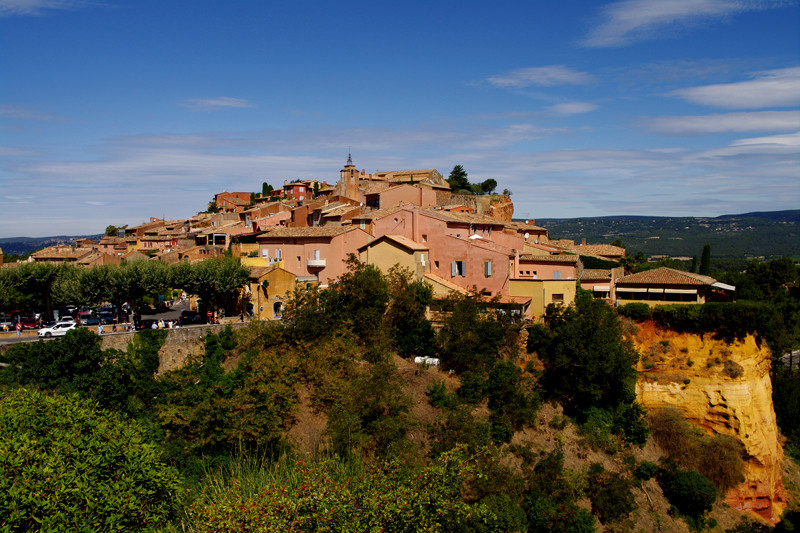
Our first stop was the Conservatoire des Ocres, based at the site of an old, though largely intact, ocher factory. While there we learned that ocher is a naturally occurring earth pigment (chemically it is hydrated ferric oxide), which produces the golden-yellow or light yellow brown color known by the same name. Due to oxidation over millions of years (or extreme heat in a kiln) it can render a spectrum of colors from dark yellow to red to brown. In the days before synthetic and artificial colorants, its primary use was as pigment in paint and dye, but it was also used as an additive in natural rubber to make tires last longer.
The ocher sands which occur abundantly in the area were either surface excavated or mined underground. The “ore” was combined with water and agitated to separate the ocher, which remained in suspension, from the sand, which settled to the bottom. Then the ocher slurry was transfered to large open air pools where the water would evaporate over several months. The resulting blocks of pure ocher were treated with heat to remove excess moisture and obtain the desired color. The machinery for sifting and packaging the ocher still exists at the factory, permanently stained deep shades of red and yellow, leaving behind dramatic glimpses into a phantasmagoric past.


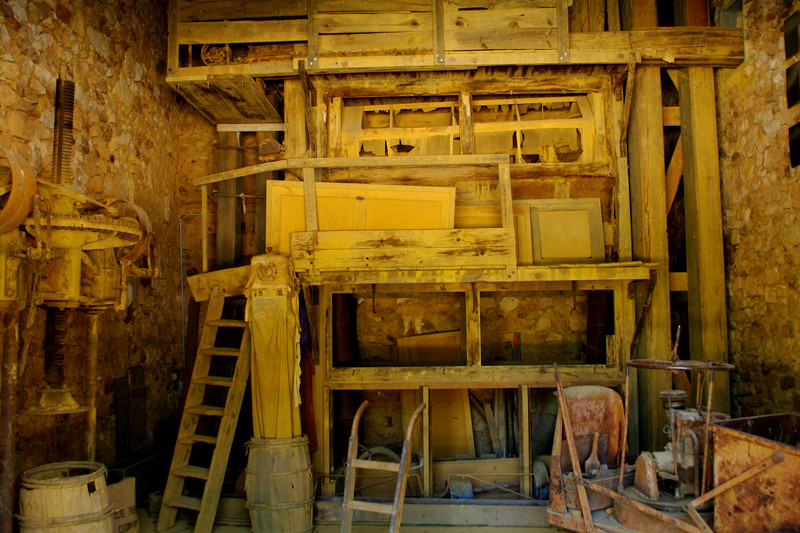
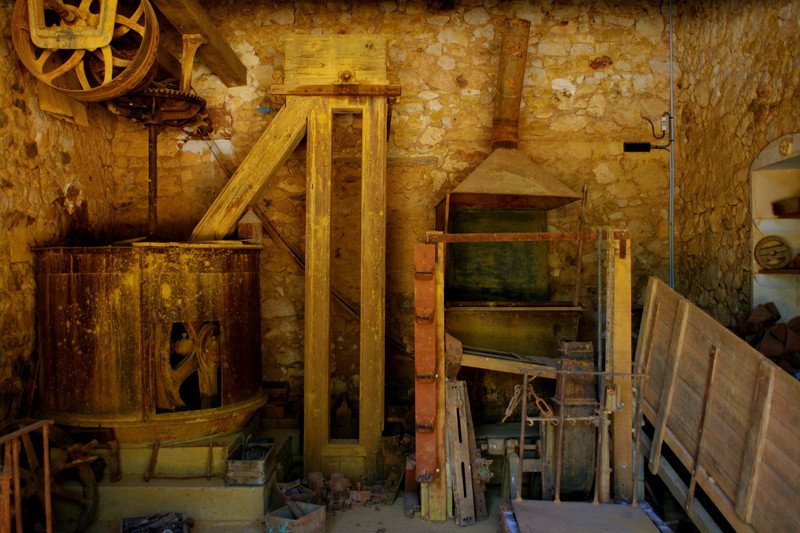
It was an information panel on the Sentier des Ocres (ocher quarry trail) that I finally confirmed the connection between the color of the Provençal houses and the presence of ocher in the region. In the old days, when houses were made from stone, the dirt dug for the foundation was used to make the mortar. Given the high presence of ocher in the dirt, it took on the color of the ground in that spot: shades of white, brown, yellow, or red. Later, when stuccoing houses became commonplace, the leftover sand from processing ocher was used to make stucco of various tints and shades. And the rest is history.
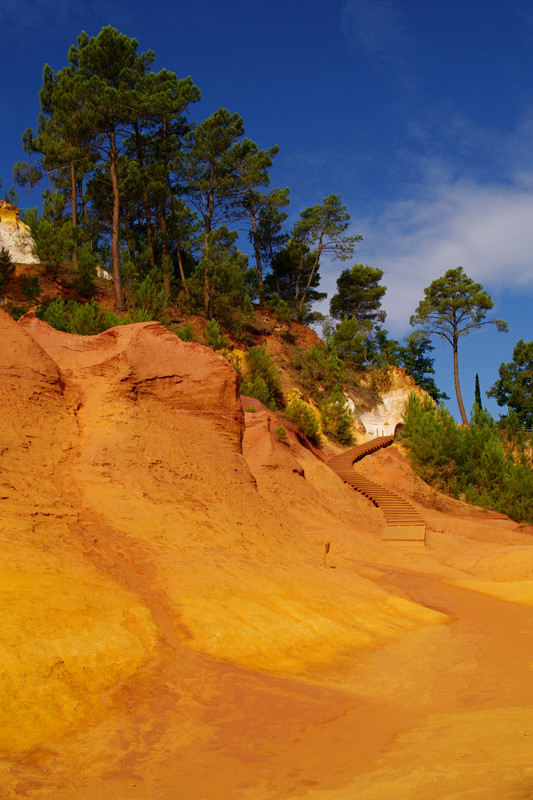
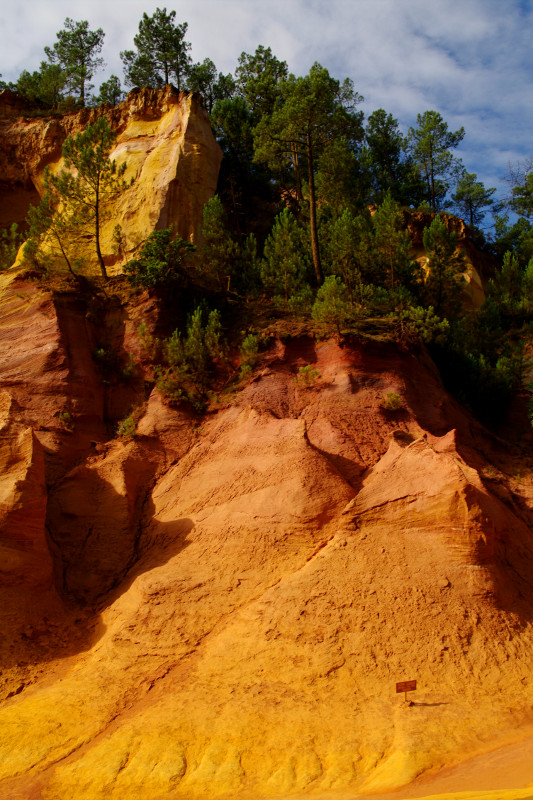

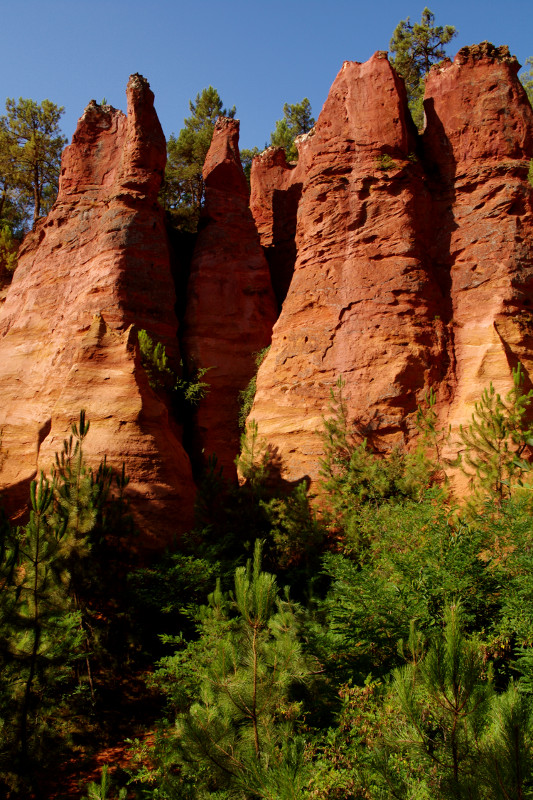

Your grandmother Watt would be impressed. On her oil painting palette was always dabs of: Cadium Red, Burnt Sienna, and especially Yellow Ochre. I never knew there was a physical reality from which is was named. Neat!
The Conservatory and shops around Roussillon sell all sorts of pigments to make your own watercolor and oil paints. So of course we picked some up ;)
please tell me you had SOME wine in Roussillon, home of awesomely priced French red!
Though we did drink wine in Roussillon (mostly rosé—it is summer in Provence after all) might you be thinking of the French region, Languedoc-Roussillon? (which confusingly does not include this Provençal village named Roussillon)
Oh fascinating. One of our recent struggles has been finding paint that is “Aix yellow”. How timely: it seems our challenge is a geographic one rather than one of hue or mix.
Csg, who or what is referring to the paint as “Aix yellow”? Depending on the source, I have a few thoughts about what they might be referring to:
1) Perhaps they are just using “Aix” as a creative geographical adjective in place of ocher/ochre, thus referring to ocre jaune from around Provence
2) Or perhaps they are referring to the color of the stones extracted from the Carrières de Bibémus near Aix-en-Provence, which apparently inspired the painter Paul Cezanne
Justin, it was Daniel and I who were looking for yellow almost the color of the house in your “Colorado Provincal” photo (for some boat paint), but based on his memory of the buildings in Aix. It’s definitely the color of the stones, but I didn’t know what I was looking at: paint, lighting, special stucco…
Ah-ha… For some reason I imagined you’d read an article or had an empty paint can referencing “Aix yellow”. ;)
I love how you pictured the atmosphere of the ocher places. The color seems to exceed from the picture frame, it´s fascinating. Thank you for sharing!